Copyright © 2022 Foshan MBRT Nanofiberlabs Technology Co., Ltd All rights reserved.Site Map
Introduction:
At present, China has taken "double carbon" as the country's long-term development goal. The layout of "double carbon" industry has important strategic value. Under the current technical conditions, it is of practical significance to layout the comprehensive utilization and effective emission reduction of greenhouse gases such as carbon dioxide.
As an innovative technology, nanotechnology has made significant changes in all fields of science, industry and daily life, especially in the field of energy. Nano materials have made outstanding contributions to the application of new energy cells, solar cells and so on. Nanotechnology has gradually become the key technology to solve greenhouse gas emissions, promote industrial reform, and achieve the goals of energy sustainability and carbon neutrality.
In this paper, five papers on the application of electrospun nanomaterials in the catalytic conversion of CO2 are sorted out for carbon neutralization.
1.Professor Du Mingliang & Zhu Han from Jiangnan University: Design of carbon neutral and efficient catalytic conversion materials
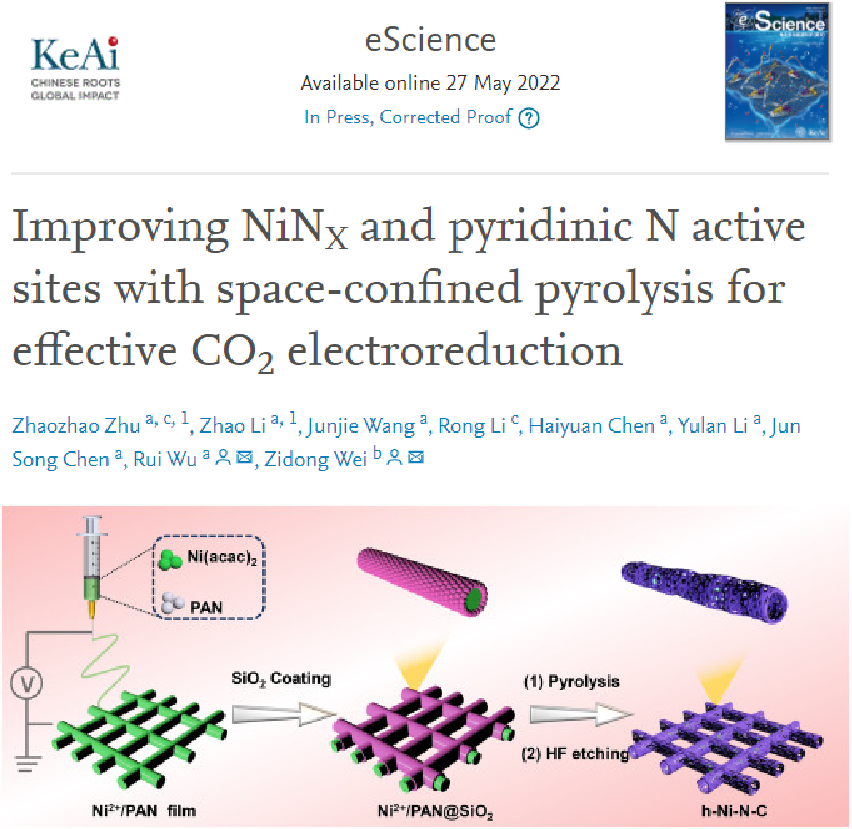
▷ due to the thermodynamic stability of CO2 molecules and competitive hydrogen evolution reaction, it has always been a challenge to realize the efficiency and selectivity of CO2 electroreduction into value-added raw materials.
▷ in this paper, a bimetallic catalyst composed of atom dispersed cun4 and nin4 bimetallic sites was synthesized by electrospun carbon nanofibers (CuNi DSA / CNFs). Theoretical analysis shows that the charge compensation effect between Cu and Ni can produce significant charge rearrangement, and the proposed cun4-nin4 configuration shows a lower reaction energy barrier than the monatomic site.
▷ in order to realize the controllable synthesis of CuNi DSA, the research group used electrospun nanofibers as the reaction template and prepared CuNi DSA catalysts (CuNi DSA / CNFs) supported on carbon nanofibers by chemical vapor deposition (CVD), and established cun4-nin4dsa model catalysts consistent with theoretical calculations.
▷ in addition, an aqueous Zn CO2 battery for CO2 power conversion is also constructed. The atomic electronegativity shift of diatomic structure provides an attractive direction for the development of advanced electrocatalysts for co2rr.
DOI:doi.org/10.1002/aenm.202200579
2. Professor xiongyueping team of Harbin Institute of Technology: ZnO catalyst with controllable oxygen enriched vacancy morphology promotes the electroreduction of CO2 to Co
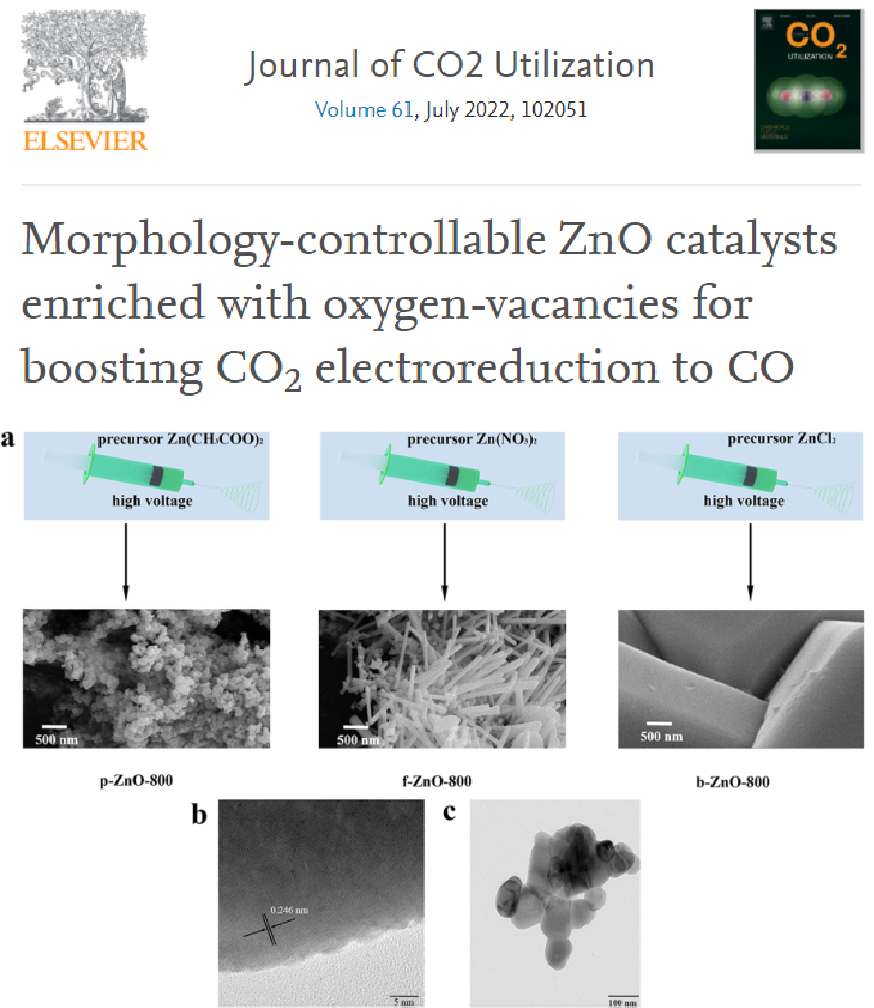
▷ electrochemical CO2 reduction (ECR) has a good development prospect in realizing carbon neutralization and energy sustainability, but its application is still hindered by its low selectivity and low activity.
▷ the defect engineering of electrocatalysts, especially the introduction of oxygen vacancies in metal oxide materials, has been proved to be an effective strategy to meet ECR thermodynamic conditions and improve kinetics.
▷ here, researchers synthesized oxygen enriched vacancy ZnO nanoparticle catalysts for efficient ECR by electrospinning using specific precursors.
▷ characterization shows that the use of Zn (CH3COO) 2 precursor helps to generate oxygen vacancies in ZnO catalyst, thereby enhancing CO2 adsorption and stabilizing intermediates. In the configuration of flow cell, for ZnO nano particle catalyst (p-zno-800), the current density of 150 mA cm-2 and the Faraday efficiency of > 80% CO can be obtained, which is of great significance to industry.
DOI:doi.org/10.1016/j.jcou.2022.102051
3. Chongqing University professor weizidong team: improve ninx and pyridine nitrogen active centers through space limited pyrolysis to achieve effective CO2 electroreduction
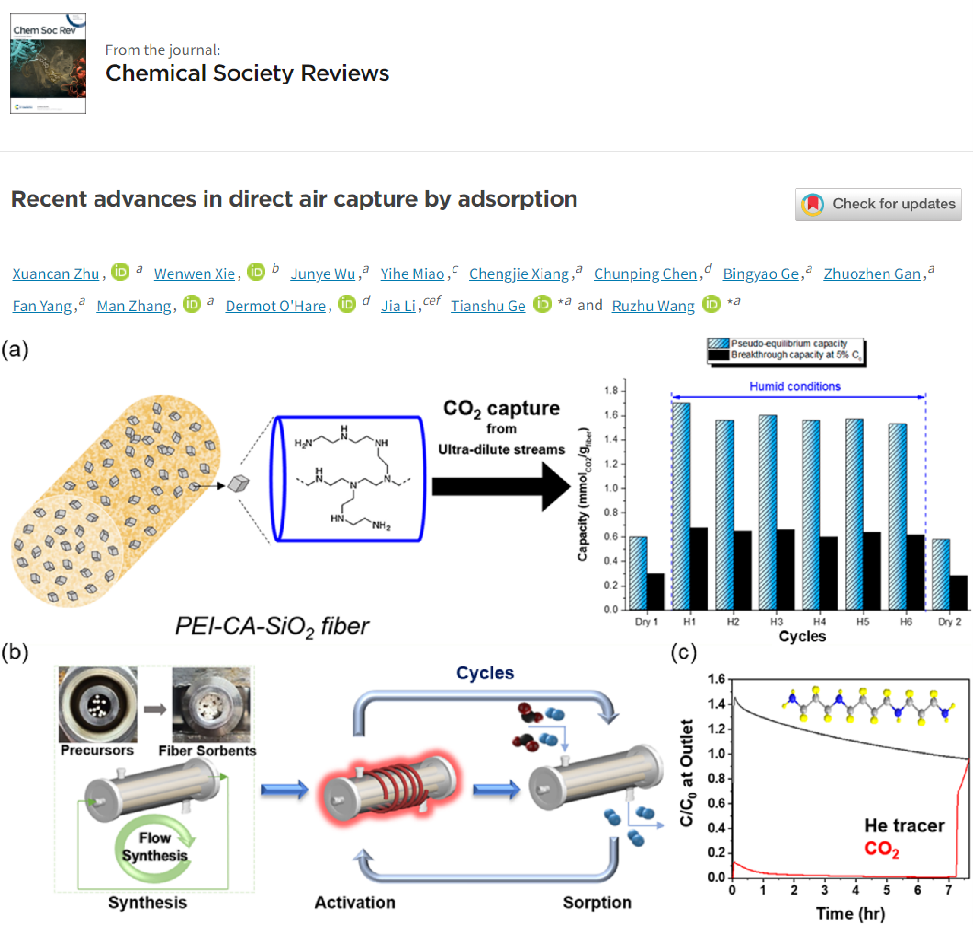
▷ although various nickel nitrogen carbon (ni-n-c) combinations are potential low-cost catalysts for CO2 electroreduction reaction (co2rr), which is a way to achieve carbon neutralization, the detailed roles of different N species have rarely been studied.
▷ this study proposes a hollow porous nitrogen doped carbon nanofiber with ninx pyridine nitrogen active species (expressed as h-ni-n-c) developed using simple electrospinning and SiO2 space limited pyrolysis strategy. Ninx pyridine nitrogen species are easy to form during pyrolysis, which improves the activity and selectivity of co2rr.
▷ density functional theory (DFT) results show that the nin4 - pyridine n species exhibit lower free energy than the nin4 and pyridine n species alone in the rate determination step of the catalyst, without affecting the desorption of CO * intermediates.
▷ DFT calculation results show that the active Nin X - pyridine n species not only improve the electron conduction of carbon, but also enhance the adsorption process of key reaction intermediates. The design of this high-performance catalyst has unique nanostructures and binding active sites, which provides guidance for the development of functional materials for electrochemical energy storage and conversion in the future.
DOI:doi.org/10.1016/j.esci.2022.05.002
4. National University of Singapore s Professor Kawi's team: nickel nanoparticles wrapped in high mesoporous nanofibers containing oxygen vacancies are used for efficient CO2 methanation
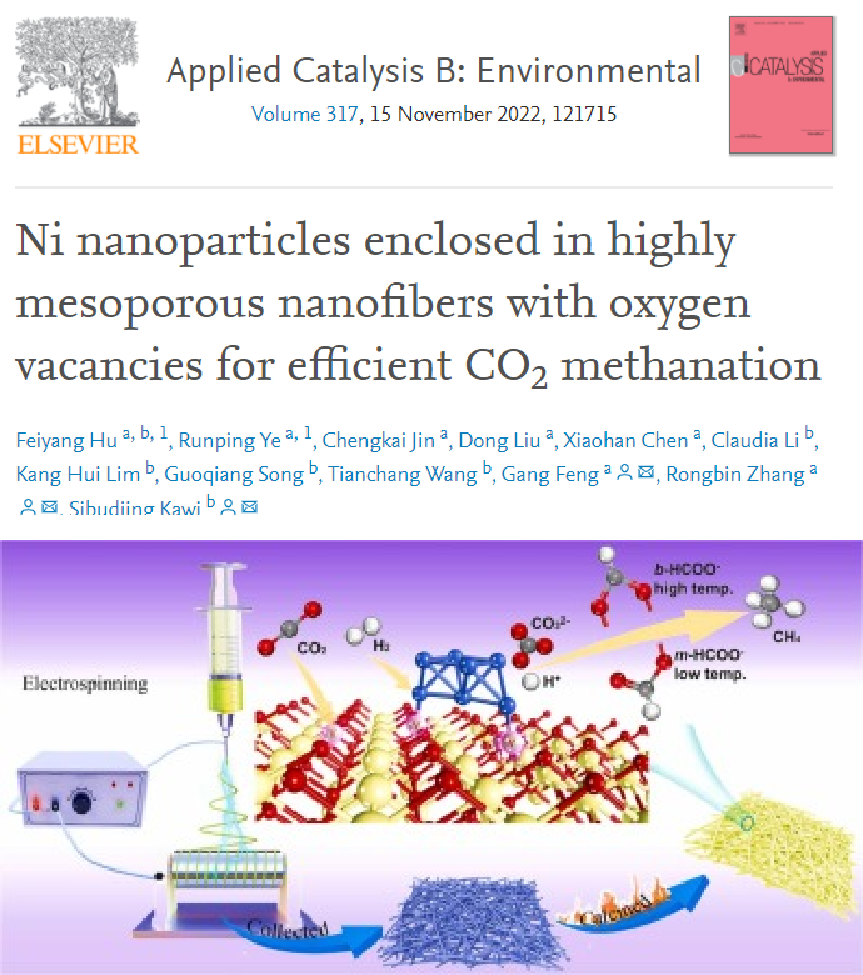
▷ the performance of CO2 methanation has a key relationship with oxygen vacancy, so the basic understanding of oxygen vacancy activation is very important.
▷ in this paper, a series of nickel based CeO2 Catalysts were prepared by impregnation and electrospinning methods. The changes of CO2 methanation performance were studied from the dynamic analysis of intermediates and the correlation of oxygen vacancies.
▷ this NiNPs@CeO2NF The catalyst prepared by CO electrospinning showed excellent catalytic performance at low temperatures of 250 ° C and 300 ° C, with CO2 conversion of 50.6% and 82.3% respectively, and excellent stability for 60 hours at high temperatures of 400 ° C. The obtained catalytic performance can be attributed to the limited environment and the synergistic effect between nickel nanoparticles and CeO2 nanofibers.
▷ in addition, in-situ Raman spectroscopy confirmed that nanofibers can form more active oxygen vacancies and can adsorb CO2 well. In situ drift analysis showed that monodentate and bridged bidentate formates were key intermediates for CO2 methanation.
DOI:doi.org/10.1016/j.apcatb.2022.121715
5. Shanghai Jiaotong University Professor Wang Ruzhu team: the latest progress in direct air capture through adsorption
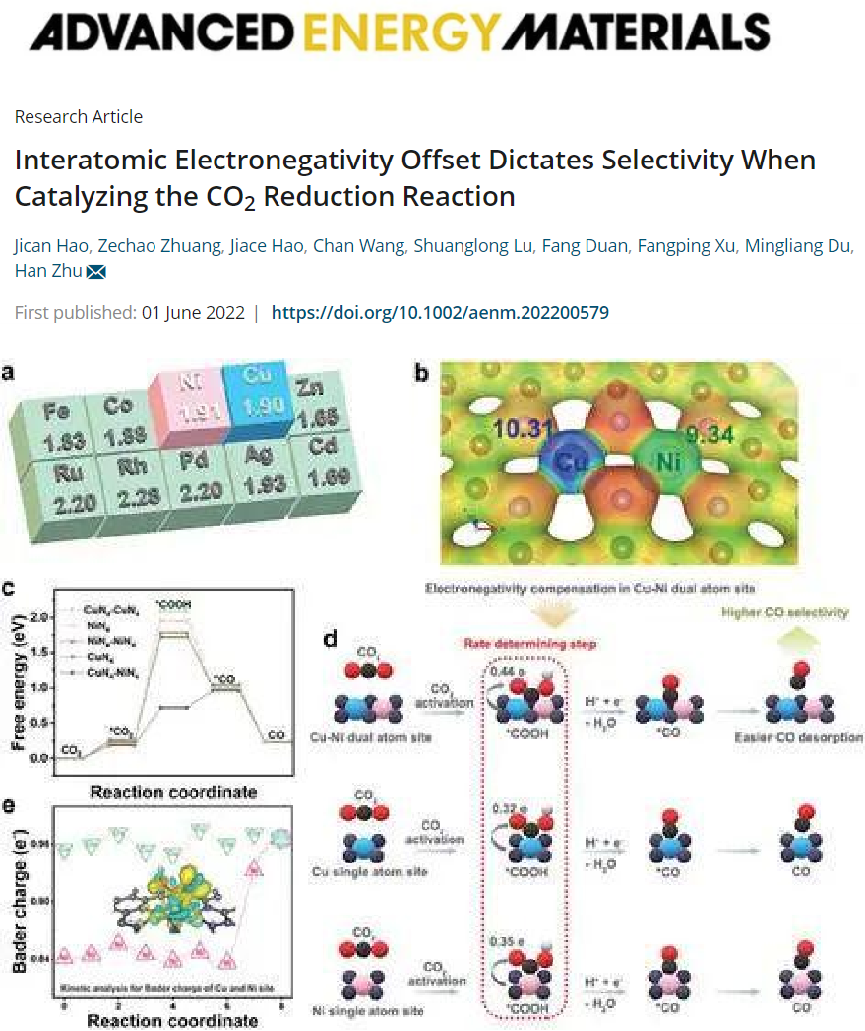
▷ in recent years, direct air capture (DAC) has made significant progress. There is evidence that it is technically feasible to deploy DAC on a large scale by adsorption, which can capture 1 billion tons of carbon dioxide per year. However, the DAC technology based on adsorption still needs great efforts. This review describes in detail the material development, adsorbent molding, in-situ characterization, adsorption mechanism simulation, process design, system integration and technical and economic analysis of adsorption based DAC in the past five years.
▷ with regard to electrospinning technology, this paper mentioned that due to the advantages of high flexibility, adjustable size and low production cost, the fiber adsorbent prepared by dry wet spinning or electrospinning is conducive to manufacturing unique gas-solid contact, allowing sufficient mass transfer, low pressure drop and advanced thermal conditioning.
▷ in order to commercialize DAC based on adsorption, it is necessary to research and develop structured adsorbents that operate at low temperature and have excellent CO2 adsorption capacity and dynamics, new gas-solid contactors with low heat and mass transfer resistance, and energy-saving regeneration methods using heat, vacuum and steam purging, and further study the application of DAC in aviation, agriculture, energy and chemical industry.
▷ this work is conducive to researchers who pay attention to global energy sustainable development and environmental issues, and provides a perspective for further deployment of negative emission technologies.
DOI:doi.org/10.1039/D1CS00970B